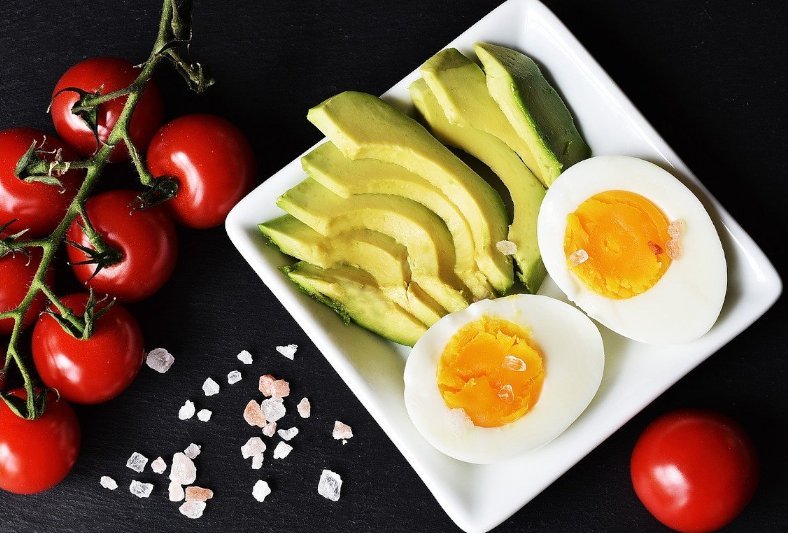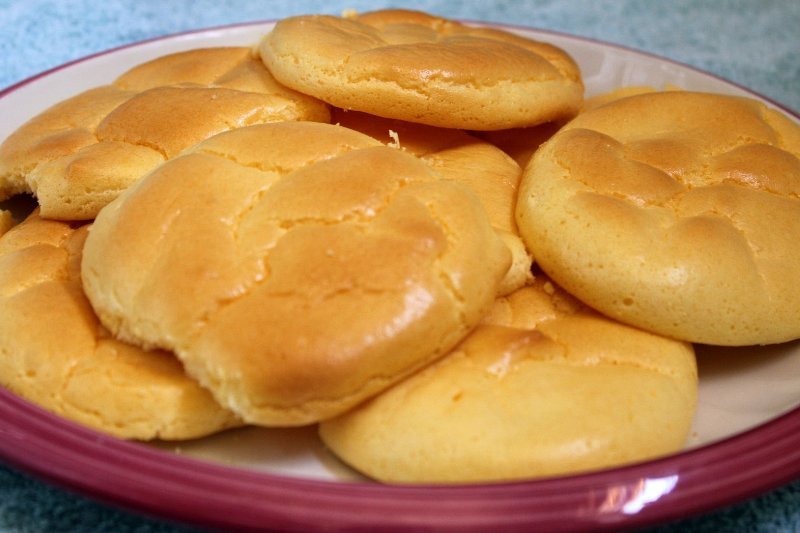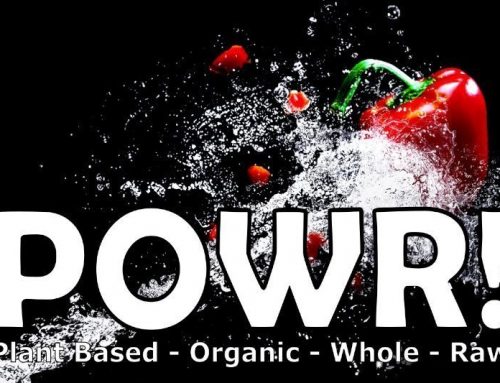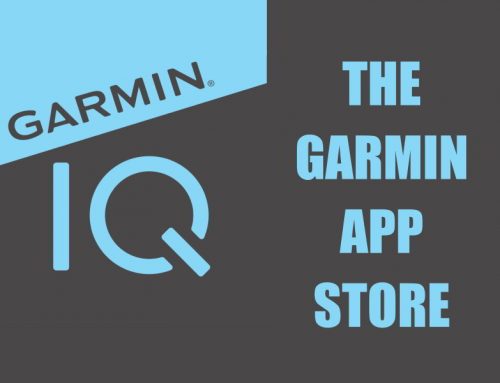The keto diet can help kick start your weight loss journey, providing quicker results and more progress early on which helps you develop good habits faster.
We know that training and exercise are essential elements of well being and weight loss and that as your weight comes down it makes the training more enjoyable and productive.
As you lose fat and gain muscle mass your weight loss will accelerate and you’ll enjoy exercising more.
Ketones may also help endurance athletes.
There is theoretical and anecdotal evidence that low-carbohydrate, high-fat diets may help endurance athletes perform better, but team and sprint athletes may see a drop in their performance.
There isn’t a lot of peer-reviewed evidence to back this up but it’s a popular trend in endurance sports.
What are ketones?
Many body cells use glucose (from carbohydrates) as their “Go To” fuel. When your body doesn’t have enough glucose to power these cells, insulin levels decrease, causing fatty acids to be released from body fat stores in large amounts.
Ketones are water-soluble “Alternative Energy” molecules that are produced by the liver from these fatty acids.
The ketones are then released from the liver into your bloodstream and are used as fuel to drive the body’s metabolism and to support muscle function.
So ketones are an alternative fuel that is made in your liver when there is not enough glucose (sugar) for energy. It occurs when carb intake and therefore insulin levels are low.
This is great for weight loss because it means we can train our bodies to “burn fat first and fast”.
What is a keto diet?
The keto diet is a high-fat, adequate-protein, low-carbohydrate diet designed to produce ketosis by mimicking the metabolic changes that happen during starvation, forcing the body to use fat as its primary energy source.
In a keto diet daily macronutrient consumption is divided into the following percentages:
- Carbohydrates: 5-10%
- Protein: 30-35%
- Fat: 55-60%
How Does The Keto Diet Help Athletes?
The ketogenic diet has become popular among endurance athletes as a performance enhancer.
When you exercise you rely on glucose from carbohydrates for energy but our bodies are naturally limited in the number of carbs they can store.
They are mainly stored as glycogen (a form of glucose made up of many connected glucose molecules), in muscle tissue (300 g) and liver tissue (90 g). They can also be stored in the blood stream (30 g). This stored glucose is enough to provide just 1650 calories of energy, not enough for many endurance events.
Because of this, endurance athletes must replenish their glycogen stores by consuming more carbohydrates every hour or so during activity. These carbohydrates need to be digested and so the gut “steals” nutrients that would otherwise be available to the athlete’s muscles.
Digesting nutrients during exercise also raises the risk of digestive disturbances which can negatively impact athletic performance.
Ketogenic diets have also been shown to reduce lactate accumulation after exercise, contributing to faster and more complete recovery.
A keto diet that trains the body to rely on fat for energy gives athletes access to a massive energy source
One pound of fat yields approximately 3500 kcal. Even the leanest athlete carries some body fat.
This means that by training the body to burn fat it’s possible to perform for longer with sustained energy levels and reduced need for refueling.
Ketone body production depends on factors such as basal metabolic rate, body weight, and body fat percentage. A healthy adult can usually enter ketosis in about three to four days. You can also get to a state of ketosis faster through intense exercise such as high-intensity-interval training (HIIT).
Keto Diet for Weight Loss
In recent years, the ketogenic diet has soared in popularity for its potential to promote weight loss.
When eating a very low carb diet, your body relies on fat-derived ketones produced in the liver to fuel itself. Over time, this can lead to meaningful weight and fat loss.
What’s more, people tend to feel less hungry and more satiated on a ketogenic diet, which is attributed to ketosis. For this reason, it’s generally not necessary to count calories when following the diet.
However, it’s widely recognized that strict adherence is essential for long-term success. Some people find it easy to stick to the ketogenic diet, while others find it unsustainable.
Signs that suggest you’re body is in ketosis – Keto Flu
Here’s how you can tell that your body is in ketosis, most are short term and are often referred to as Keto flu.
- Feeling tired or fatigued (typically short term)
- Bad breath
- Dry mouth
- Increased thirst
- Decreased urination
- Change in bowel movements (diarrhea or constipation)
- Decreased appetite
- Decreased hunger
- Weight loss
- Experiencing flu symptoms, such as headache and nausea
- Insomnia
Signs that suggest you are in ketoACIDOSIS which is a BAD thing
Ketosis vs. ketoacidosis
Your goal is to put your body in ketosis but it’s possible to reach a state of Ketoacidosis where the bloodstream is flooded with extremely high levels of glucose and ketones.
This makes the blood acidic, which is life threatening. Ketoacidosis is most often associated with uncontrolled type 1 diabetes. It can also occur in those with type 2 diabetes or severe alcohol abuse.
Symptoms of ketoacidosis include but are not limited to:
- excessive thirst or dry mouth
- frequent urination
- hyperglycemia, or high blood sugar
- high levels of ketones in the blood (>3 mmol/L)
- weakness
- nausea
- vomiting
- confusion
- difficulty breathing
If you’re experiencing any of these symptoms, seek immediate medical attention.
How to Test Your Urine for Ketones Using Home Urine Ketone Tests
Generally, you don’t need to test for ketones because there are so many physical indicators that you know when your body has entered a state of Ketosis however you might be interested to measure your progress using a cheap urine test.
You should definitely consult your doctor BEFORE starting a keto diet if you have Diabetes 1 or 2.
Speeding up the production of ketones can lead to an excess build-up in the blood and urine. This is called diabetic ketoacidosis (DKA) which can be life-threatening.
Your doctor may suggest you use self test kits or may advise against the Keto diet and will recommend a better alternative for you.
How to Choose Ketone Test Strips
There are many brands of urine ketone test strips available over the counter at drugstores, supermarket pharmacies, and other stores where medical supplies are sold. Ketostix is a common brand. Ketone urine test strips are also available by prescription.
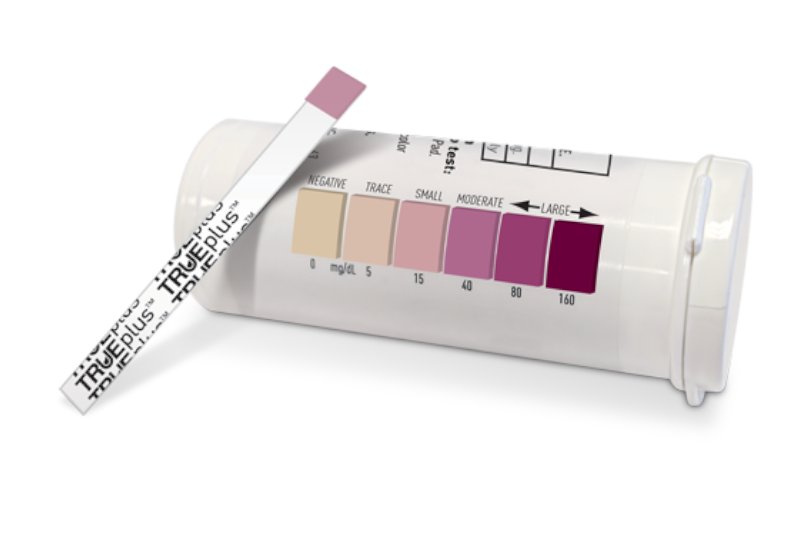
How to Use Ketone Testing Strips
Whatever brand strips you buy, it's important to read the product insert in detail to see if the directions for use vary from the generic ones below. If they do, follow those exact instructions instead.
Details of the Keto Diet
There are two ways to put your body in a keto state
1) By altering your diet (this usually takes 3 – 4 days
2) And/Or by taking Ketone pills or supplements
One big concern is you're eating a lot of fat on keto, and that fat may be saturated, which is unhealthy when eaten in excess. (The much higher total fat intake is also a challenge among keto beginners).
In terms of weight loss, you may be interested in trying the ketogenic diet because you’ve heard that it can make a big impact right away and that’s often true, Ketogenic diets will cause you to lose weight within the first week
A major benefit of the keto diet is that it is linked to decreased levels of ghrelin, one of your body’s main hunger hormones, this may make it easier to avoid eating too many calories.
Your body will first use up all its glycogen stores (the storage form of carbohydrates). With depleted glycogen, you’ll drop water weight which is encouraging but not a long term solution to weight loss.
What to Eat and Avoid on a Keto diet
CARBOHYDRATES (5-10% of calories)
Get your carbs from high-fiber, water-rich fruits and vegetables to naturally boost hydration and keep your digestive system healthy. Above ground greens are lower carb. (leafy greens, peppers, and stalk-shaped vegetables).
Good examples of CARBOHYDRATE keto diet foods: (Aim to eat 40 grams a day on a 2000 Cal Diet)
- Tomatoes
- Eggplant
- Asparagus
- Broccoli
- Cauliflower
- Spinach
- Green Beans
- Cucumber
- Bell peppers
- Kale
- Zucchini
- Celery
- Brussels sprouts
- Celery
PROTEIN (10-20% of calories)
Protein is essential to build muscle cells and burn calories.
If you eat more fat and less protein than recommended, your body will turn to muscle tissue as fuel. This, in turn, will lower your overall muscle mass and the number of calories you burn at rest.
Plus, your body will convert the excess protein to carbohydrates for fuel. The exact opposite goal of the keto diet and you'll put undue strain on your kidneys..
Good examples of PROTEIN keto diet foods: (Aim to eat 70 grams a day on a 2000 Cal Diet)
- Chicken, dark meat if possible
- Turkey, dark meat if possible
- Venison
- Beef
- Salmon
- Sardines
- Tuna
- Shrimp
- Pork
- Lamb
- Eggs
- Natural cheeses
- Unsweetened, whole milk plain Greek yogurt
- Whole milk ricotta cheese
- Whole milk cottage cheese
- Salmon fillet
- Parmesan Cheese
- Greek Yogurt with Spoon
FAT (70-80% of calories)
Here's where the bulk of your intake comes into play. Several studies have shown that a higher-fat diet can reduce cravings and levels of appetite-stimulating hormones ghrelin and insulin.
You can go full fat but focus on consuming a higher ratio of unsaturated fats (flaxseed, olive oil, nuts) to saturated fats (lard, red meat, palm oil, butter).
Good examples of FAT keto diet foods: (Aim to eat 165 grams a day on a 2000 Cal Diet)
- Olive oil
- Avocado oil
- Olives
- Avocados
- Flaxseeds
- Chia seeds
- Pumpkin seeds
- Sesame seeds
- Hemp hearts
- Coconuts
- Nuts
- Natural, no-sugar-added nut butters
- Olive oil
Foods to Avoid
Although they are often considered healthy options you need to steer clear of these foods when you’re on a keto diet
- Beans, peas, lentils, and peanuts
- Grains, such as rice, pasta, and oatmeal
- Low-fat dairy products
- Added sugars and sweeteners
- Sugary beverages, including juice and soda
- Traditional snack foods, such as potato chips, pretzels, and crackers
- Most fruits, except for lemons, limes, tomatoes, and small portions of berries
- Starchy vegetables, including corn, potatoes, and peas
- Trans fats, such as margarine or other hydrogentated fats
Keto Recipes and low carb meal kits are a good way to kick start your keto diet
One of the problems of the keto diet and one that vegans also suffer from is that the limited list of ingredients makes it really hard to put together meals and it’s easy to end up eating the same thing every day if it’s something you love then happy days but variety is the spice of life and eating is one of life’s great pleasures so it’s worth making a little effort.
Here are 59 great Keto recipes
Or try these keto meal kit delivery services, they are a great intro to keto and zero waste as you get exactly the amount you need.
Keto Bread makes it easier to stick to your diet
One thing many people struggle to give up on a keto diet is bread and a whole industry has sprung up to meet these cravings
Keto bread is usually made from coconut or almond flour and so is very low in carbs and high in other essential nutrients. they’re high in calories but on a keto diet, you’re not calorie counting so that’s ok.
Keto branded loaves of bread are very expensive so you may be better off buying low carb bread instead or even better why not make your own. It’s really easy and there are a ton of recipes online.
Cloud Bread Is probably the most popular and versatile Keto Bread Alternative
Cloud bread is a high-protein, low cal, zero carb bread alternative that’s perfect for keto dieters.
It’s made by whipping egg whites with cream of tartar to achieve the soft, fluffy texture of meringue. The mixture is then folded into the egg yolks, together with a full-fat dairy product like cottage cheese, cream cheese, or yogurt and sometimes a little bit of sweetener.
The resulting batter is spooned or piped into round disks on a rimmed baking sheet and baked.
When the disks first come out of the oven, they have a crisp, melt-in-your-mouth quality, not unlike meringue. Once they have fully cooled they have a chewier, slightly bready texture.
What Are Cloud Bread's Health Claims?
Cloud bread contains half the calories of a regular slice of bread, and, depending on the recipe, about one gram of carbohydrate per round of cloud bread. It’s gluten free, as well.
Cloud bread is incredibly versatile, you can use it as buns for your burgers, as a pizza base, to roll around hot dogs, to make éclairs, and as bread for sandwiches.
It can be baked in big batches ahead of time and stored in the freezer. Pop it in the toaster to thaw it in under a minute.
Keto Supplements
Because you’re restricting the variety of food you eat you probably won’t get all the essential nutrients and vitamins you need from your diet. Deficiency of certain nutrients can cause Keto flu and other unpleasant side effects and taking keto supplements can alleviate these symptoms.
Read our Keto supplements article here
Keto Diet Pills
Keto pills are natural supplements are a pill or powder that contain ingredients that help you achieve ketosis. Some ketone supplements include exogenous ketones or ketones produced outside the body.
Others contain medium-chain triglycerides or ketone salts, which help maintain a consistent keto diet and burn more fat.
One problem many people face when on the standard ketogenic diet is the keto flu. Switching to the keto diet can initially produce symptoms that resemble the flu as your body adjusts to its new diet.
KetoCharge is a popular supplement that can help minimize your keto flu symptoms, making it easier to stick to keto diets. These keto pills contain healthy salts that change into electrolytes in your body, giving you energy and keeping you hydrated as your body adjusts to a lack of carbohydrates.
One of the reasons why Keto diet pills may not be all that effective is because the body seeks to maintain an even level of ketones to prevent a potentially toxic build-up of these chemicals in the bloodstream.
When the body senses that ketone levels are high, the liver stops making its own, so supplementing ketones might actually cause your body to stop producing them naturally and so limit your ability to stay in that target ketogenic, fat-burning zone. that’s been associated with rapid weight loss.
There are a lot of online “Keto Scams” such as secretly enrolling you on an autorenewal plan and because dietary supplements are not regulated by the Food and Drug Administration, you need to check the reputation of the pills by reading the reviews.
Downsides and risks of a keto diet
Although generally safe for most healthy people, a ketogenic diet may trigger some side effects which means it’s not suitable for everyone. You should consult your doctor before starting a keto diet and if you have any unexpected or serious adverse symptoms.
Short-term effects include headache, fatigue, constipation, dehydration, and bad breath. Widely known as keto flu they usually disappear within a few days or weeks.
There’s a risk of developing kidney stones, high LDL (bad) cholesterol, and nutrient deficiencies, so you may want to take natural keto supplements. See this article on recommended keto supplements.
Because the diet is highly restrictive, it may not be suitable for those with a history of eating disorders. Also, following such a strict diet can feel socially isolating for some.
There have been reports of ketoacidosis, a potentially life-threatening condition, in breastfeeding mothers who follow a low carb or keto diet. If you’re breastfeeding, you should consult your doctor before starting a keto diet and if you have any unexpected or serious adverse symptoms.
If you are taking hypoglycemic, or blood-sugar-lowering drugs, you should check with your doctor before starting a ketogenic diet. It may reduce your need for medication.
Ketogenic diets are low in fiber so you need to eat plenty of high fiber, low carb vegetables to maintain good digestive health and prevent constipation.
Keto as a Treatment for Epilepsy
Epilepsy is a brain disorder characterized by recurring seizures. It’s a neurological condition and affects around 50 million people worldwide In the early 1920s, the ketogenic diet was introduced as a treatment for epilepsy in those who didn’t respond to drug treatment (around 30% of people)
The diet has primarily been used in children. Many studies in both children and adults with epilepsy have found that it can significantly reduce seizures and sometimes even cause remission the main problem is that the diet is difficult to follow long term and is usually reserved for people who don’t respond to conventional treatments.
Medical Disclaimer
All content and media on the Training With Data Website are created and published online for informational purposes only. It is not intended to be a substitute for professional medical advice and should not be relied on as health or personal advice.
Always seek the guidance of your doctor or other qualified health professional with any questions you may have regarding your health or a medical condition. Never disregard the advice of a medical professional, or delay seeking it because of something you have read on this Website.
If you think you may have a medical emergency, call your doctor, go to the nearest hospital emergency department, or call the emergency services immediately. If you choose to rely on any information provided by Training With Data, you do so solely at your own risk.
External (outbound) links to other websites or educational material (e.g. pdf’s etc.) are followed at your own risk. Under no circumstances is Training With Data responsible for the claims of third-party websites or educational providers.
